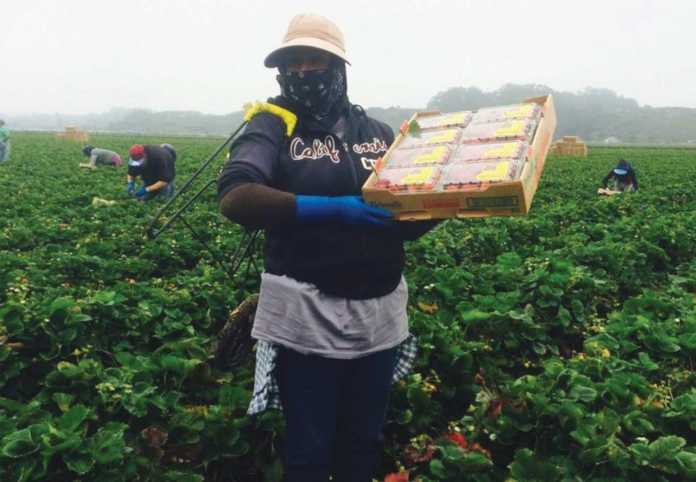(Photo courtesy of the Center for Farmworker Families)
SANTA CRUZ COUNTY–Ann López’s humanitarian journey began through her own education.
After teaching science for a number of years at San Jose City College, she began working on her Ph.D., researching how the North American Free Trade Agreement (NAFTA) impacted small-scale farmers in Mexico.
What she found was heart-wrenching.
“I saw up close and personal what was happening to these people,” López said. “I just couldn’t live knowing about it and doing nothing.”
After NAFTA went into effect in 1994, cheap U.S. corn began pouring into Mexico, and many small farmers found themselves unable to make a living. Millions of people then began migrating to the U.S. in search of a better life, many taking jobs as agricultural workers.
López is now the executive director of the Center for Farmworker Families in Felton. The center began informally in 2000 when López started hauling suitcases full of shoes and clothing to Mexico to distribute to farmers and their families. It has since transformed into a wide-reaching organization, with projects throughout California and Mexico.
For more than eight years the center has been campaigning against the 50-Mile Regulation. This state regulation, enacted by the California Department of Housing and Community Development, requires that farmworkers move at least 50 miles away from a migrant camp after harvesting season. Only then will they be allowed back to the camp the following year.
López explained that by forcing families to move so frequently, children’s education is severely disrupted. Less than 10 percent of children living at the Buena Vista Migrant Camp in Watsonville stay in school long enough to even graduate from high school.
“It’s a dysfunctional rule,” López said. “Some kids change schools three or four times per year. They’re prevented from having a stable education, and thus from being successful.”
As of December 2017, the Center for Farmworker Families has made some progress regarding the regulation. The Housing Authority of Santa Cruz County has modified it by allowing migrant families to arrive a month earlier and stay a month longer, which allows the children to finish each semester in full.
López said that just informing people about the rule has made a difference. A letter-writing campaign has brought it to the attention of many citizens and legislators, who are now interested in helping change the policy. However, López maintains that the fight to end the rule completely is far from over.
Also ongoing is the center’s rally against the use of certain agricultural pesticides. Chlorpyrifos, a pesticide that was banned for indoor use years ago, is still commonly used in agriculture, despite the fact exposure to it has been linked to brain damage in children and complications for pregnant mothers.
A few years ago scientists at the Environmental Protection Agency (EPA) came to the conclusion that chlorpyrifos should be banned altogether. But last year, the new chief of the EPA, Scott Pruitt, barred a years-long petition to ban the pesticide, claiming there is not enough “sound science” to back up the research.
“It’s reprehensible,” López said. “There’s a reason we’ve stopped using this chemical in our homes. Why should farmworkers and their families be subjected to it?”
To raise awareness of these and other issues, the Center for Farmworker Families hosts “Farmworker Reality Tours,” which offer people the chance to see what it’s like for the workers and their families. Guests are taken on a tour of the Buena Vista Migrant Camp, learn about agricultural practices and speak one-on-one with a farmworker family.
López said the tours have been instrumental in opening people’s eyes to the many challenges these workers face.
“I’ve had people come up to me after the tour in shock,” López said. “They had no idea what these workers have been going through.”
The center also offers housing assistance and placement, as well as a free in-home tutoring program for farmworker children through UC Santa Cruz, and special projects for California’s Oaxacan community. In Mexico, the center continues a number of projects, including supporting the small rural farming town of Cuquio, Jalisco.
All of these ongoing projects keep López very busy. But her work has paid off, with the organization winning many awards, including the Social Justice Award at the 2012 EcoFarm Conference in Asilomar. López herself was chosen as Woman of the Year in 2013 by the National Association of Professional Women.
López’s says her main goal continues to be educating others and getting communities involved.
“We need to see a major transformation,” López said, “in agriculture, in human rights legislation. And the only way that can happen is through action.”
For information on the Center for Farmworker Families and its current projects, and how to donate to the organization, visit farmworkerfamily.org.













